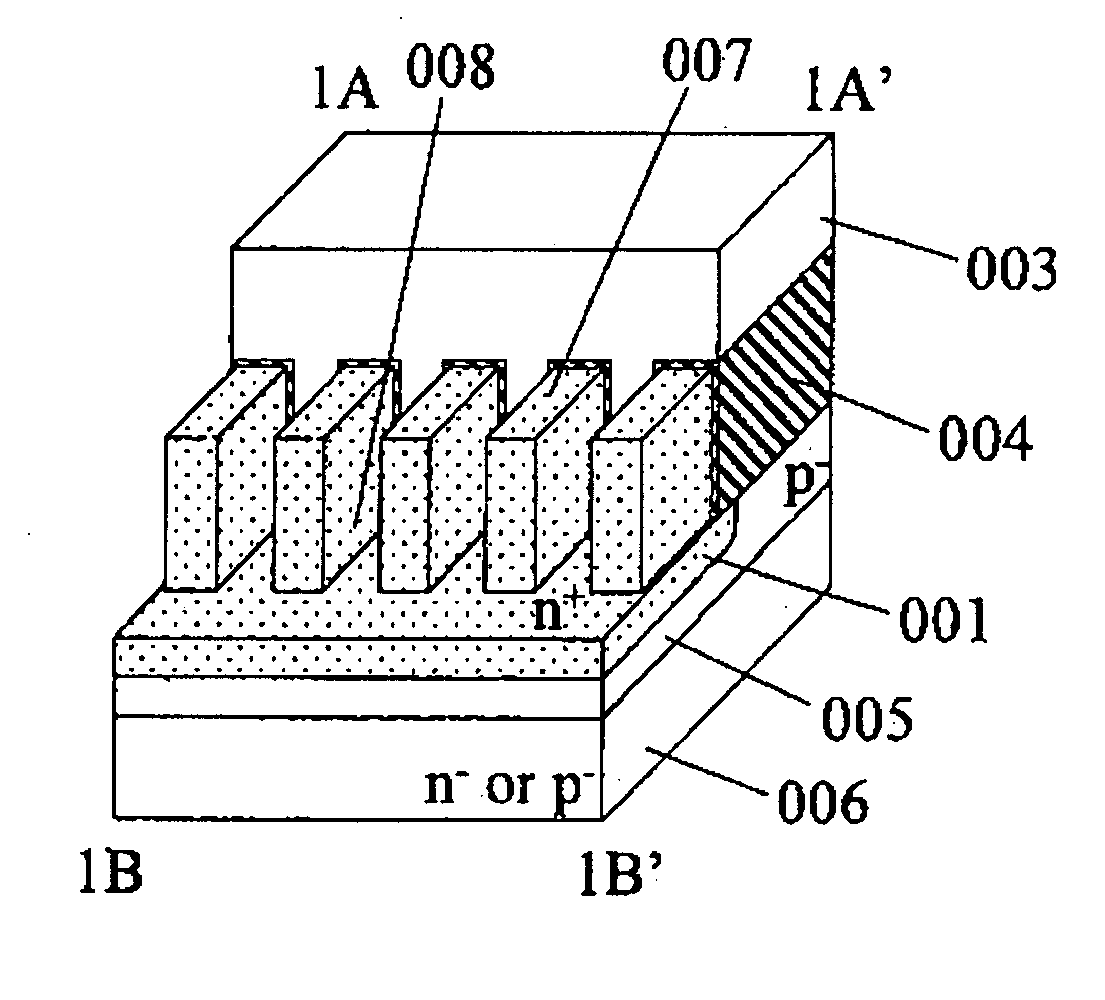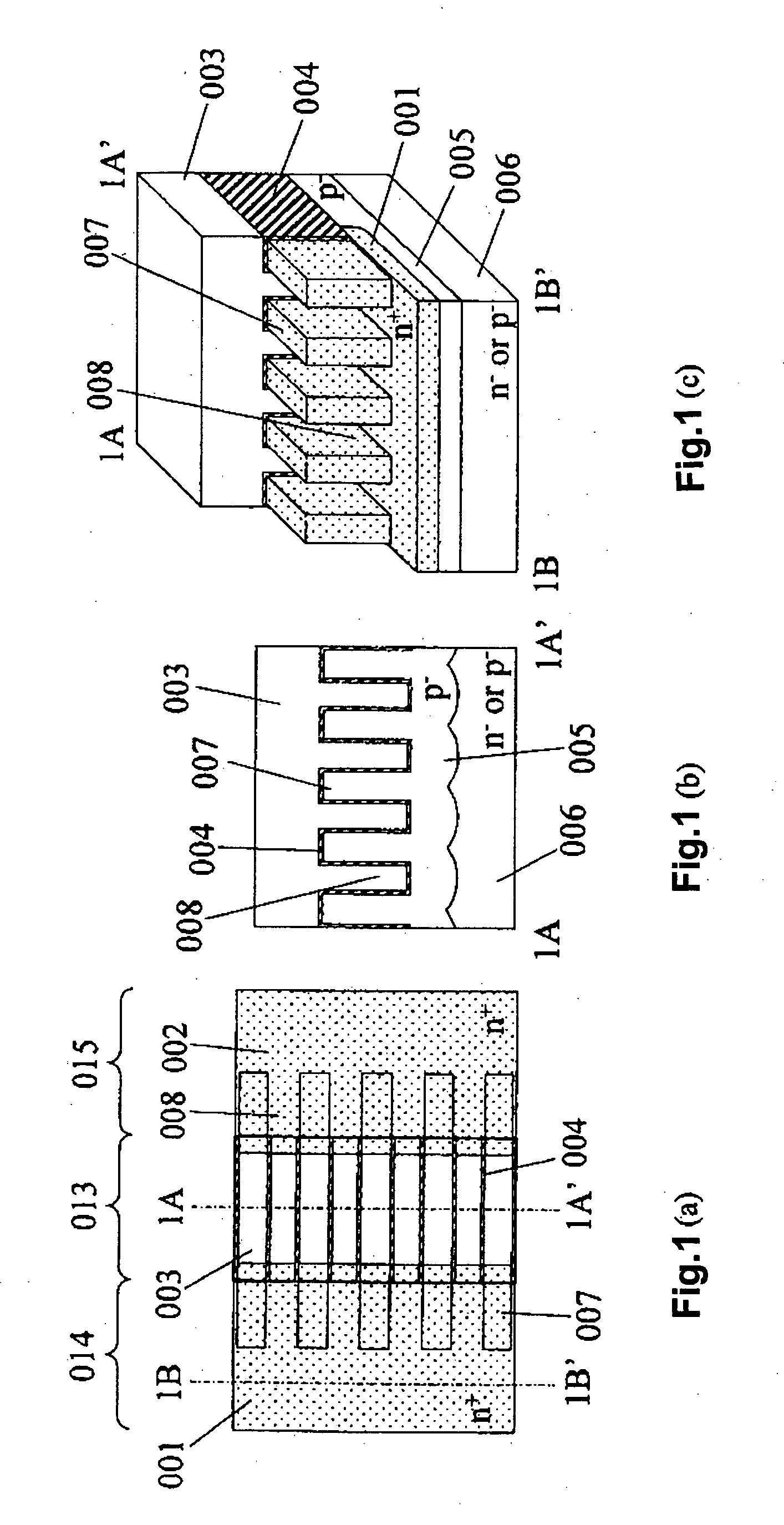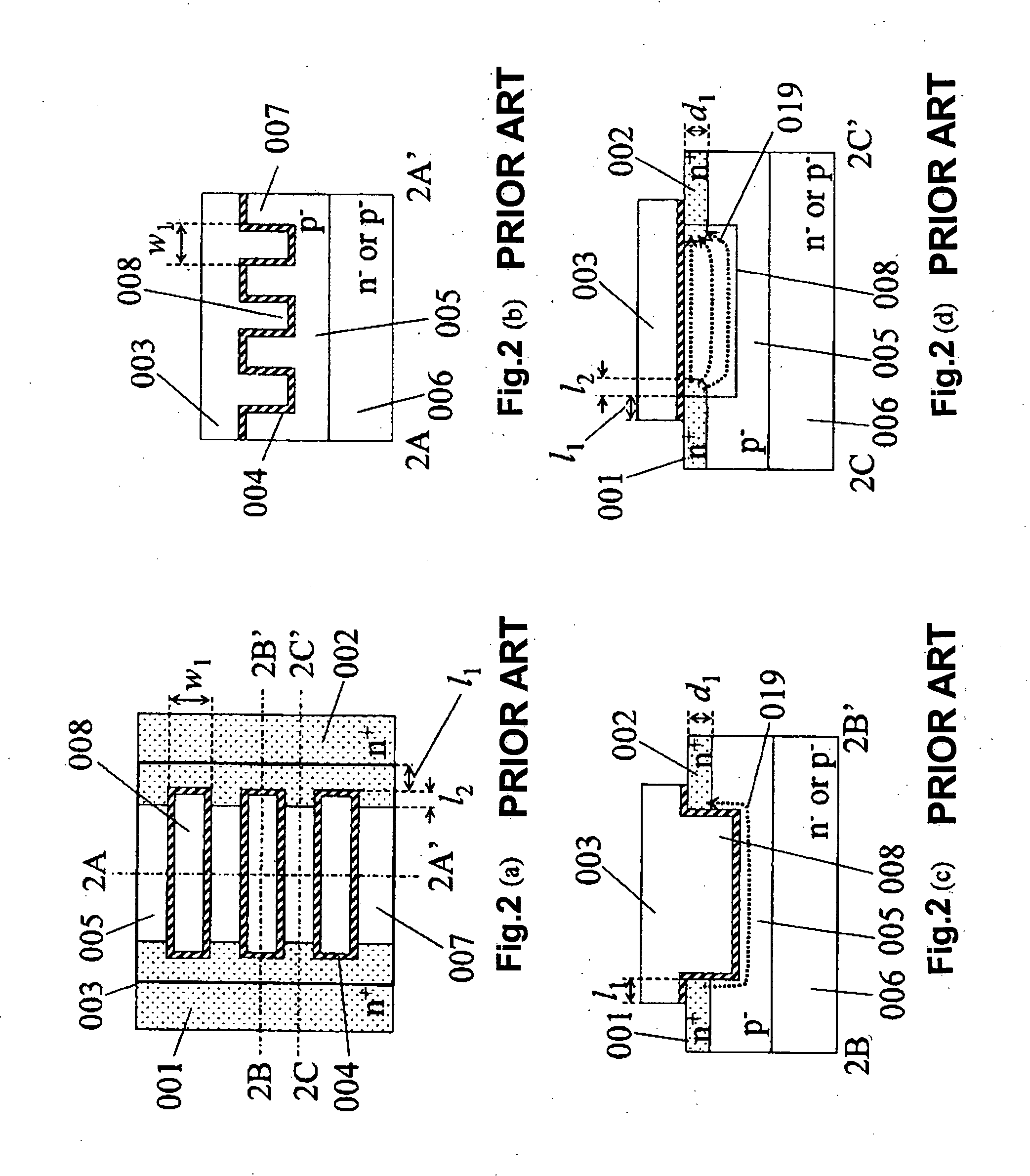Lateral semiconductor device using trench structure and method of manufacturing the same
a semiconductor device and trench structure technology, applied in the direction of semiconductor devices, basic electric elements, electrical equipment, etc., can solve the problems of prior art and hinder the improvement of driving performance, and the mounting of integrated circuit standard elements on chips with integrated circuit standard elements, so as to reduce the resistance of transistors and contact area
- Summary
- Abstract
- Description
- Claims
- Application Information
AI Technical Summary
Benefits of technology
Problems solved by technology
Method used
Image
Examples
embodiment 1
[0025]FIGS. 1A to 1C show a typical embodiment of the present invention. Here, FIG. 1A is a plan view, FIG. 1B is a sectional view taken along the line 1A-1A′ of FIG. 1A, and FIG. 1C is a perspective view cut along the line 1A-1A′ and the line 1B-1B′ of FIG. 1A. Here, in FIG. 1A, a gate electrode 003 and a gate insulating film 004 on trenches are transparent so as to be viewed easily. A bold line indicates an edge of the gate electrode 003. Further, FIG. 1C is a view seen from a source region 001. In this drawing no metal interconnect is omitted in order to show source and drain structure in three-dimensionally. This figure shows a symmetrical structure with the line 1A-1A′ as its center. Thus, the view seen from a drain region 002 is same as FIG. 1C. Note that the symmetrical structure is taken for easy understanding in the explanation of the embodiment of the present invention; however, the symmetry is not necessary in implementing the present invention.
[0026] Hereinafter, descri...
embodiment 2
[0037]FIG. 5 shows an embodiment of the present invention, which has a DDD structure. A different point of Embodiment 2 from that in Embodiment 1 is that only the third trench region 15 is opened before the formation of the source region 001 and the drain region 002, and a low level diffusion region 011 is formed which includes the drain region 002 formed in the subsequent step. Therefore, a high-driving performance MOS transistor with a high withstand voltage and a low ON resistance is completed.
embodiment 3
[0038]FIG. 6 shows an embodiment of the present invention, which has an LDMOS structure. A different point of Embodiment 3 from that in Embodiment 1 is that only the second trench region 14 is opened before the formation of the source region 001 and the drain region 002, and a body region 012 is formed which does not include the drain region 002 which are formed in the subsequent step but increases the source region 001. Therefore, a high-driving performance MOS transistor with a high withstand voltage and a low ON resistance is completed.
[0039] Described above is the embodiment of the present invention which includes the NMOS transistor in which a first conductivity type is N-type and a second conductivity type is P-type. With the use of the structure of this embodiment of the present invention, the driving performance per unit plane area can be enhanced while the same withstand voltage as that of a general planar type MOS transistor is maintained. Thus, the bottom surface of the ...
PUM
 Login to View More
Login to View More Abstract
Description
Claims
Application Information
 Login to View More
Login to View More - R&D
- Intellectual Property
- Life Sciences
- Materials
- Tech Scout
- Unparalleled Data Quality
- Higher Quality Content
- 60% Fewer Hallucinations
Browse by: Latest US Patents, China's latest patents, Technical Efficacy Thesaurus, Application Domain, Technology Topic, Popular Technical Reports.
© 2025 PatSnap. All rights reserved.Legal|Privacy policy|Modern Slavery Act Transparency Statement|Sitemap|About US| Contact US: help@patsnap.com



